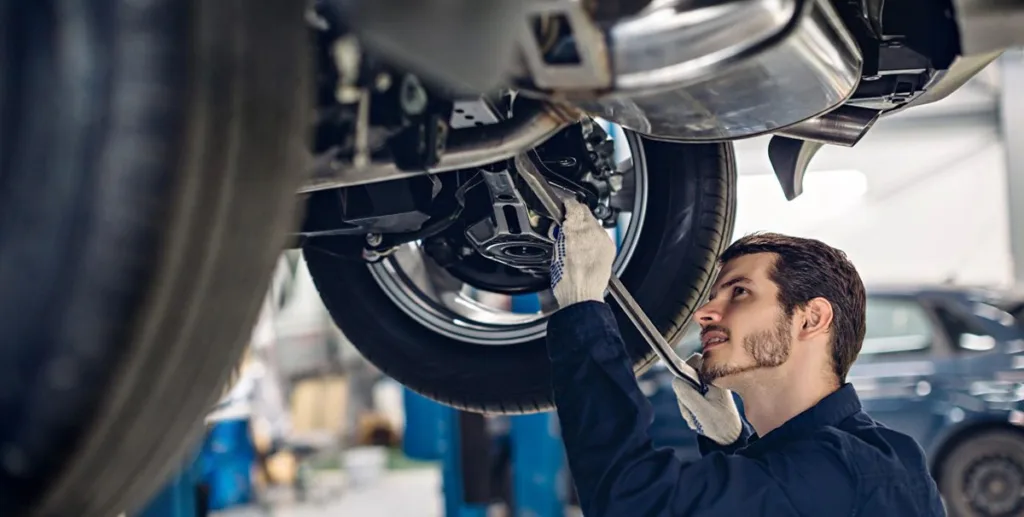Featured
Your lorry's suspension system is an essential component that enhances your driving experience by providing convenience, control, and stability. Below's a step-by-step guide to keeping your suspension system in exceptional form.
![]()
Dripping Liquid: Oil around the struts or shocks shows they might require replacement. Damaged Springs: Splits or breaks in the springs can create unequal automobile height. Rust or Corrosion: Metal components like control arms and bushings are at risk to deterioration with time. If you notice any kind of problems, have your suspension system inspected by a professional mechanic.
Maintain tires blown up to the advised pressure. Rotate tires every 5,000 to 7,500 miles. Balance and line up wheels every year or after hitting holes or visuals. Irregular tire wear is a typical indication of suspension imbalance or used parts.
![]()
Conclusion. Proper maintenance of your suspension system is crucial for guaranteeing a comfy and safe driving experience. By conducting regular evaluations, changing worn components, preserving tire care, and driving sensibly, you can maintain your suspension in peak condition. Aggressive treatment not just prevents costly repair work however likewise guarantees your vehicle's longevity and safety for each trip.
- Comprehend the Importance of the Suspension System. The shock absorber takes in shocks from irregular roadways, sustains the auto's weight, and keeps the tires strongly in contact with the road. It consists of shocks, struts, springtimes, control arms, and bushings, all of which interact to make certain a steady and smooth trip. Identifying its importance is the very first step toward correct treatment.
- Conduct Normal Aesthetic Inspections. Regular visual checks can help recognize possible problems early. Try To Find:

Dripping Liquid: Oil around the struts or shocks shows they might require replacement. Damaged Springs: Splits or breaks in the springs can create unequal automobile height. Rust or Corrosion: Metal components like control arms and bushings are at risk to deterioration with time. If you notice any kind of problems, have your suspension system inspected by a professional mechanic.
- Address Uncommon Sounds and Signs. Unusual sounds, such as creaking, squealing, or clunking, usually signal suspension problems. In a similar way, a bouncy ride, difficulty guiding, or the car pulling away shows that a suspension part may need focus. Don't overlook these indicators; early detection can prevent additional damages.
- Preserve Proper Tire Treatment. Tires and suspension interact to deliver a smooth adventure. To reduce anxiety on your shock absorber:
Maintain tires blown up to the advised pressure. Rotate tires every 5,000 to 7,500 miles. Balance and line up wheels every year or after hitting holes or visuals. Irregular tire wear is a typical indication of suspension imbalance or used parts.
- Change Worn-Out Parts promptly. Suspension parts like shocks, struts, and bushings break over time. Producers usually advise changing shocks and shows off every 50,000 to 100,000 miles, depending on driving problems. Delaying substitute can endanger handling, security, and total lorry performance.

- Stay Clear Of Overloading Your Vehicle. Exceeding your car's weight capability places too much pressure on the suspension system. This can lead to quicker tear and put on on elements like springs and shocks. Always check your owner's handbook for weight limitations and avoid overloading.
- Drive Responsibly. Hostile driving routines, such as speeding over gaps, taking edges too quick, or regularly driving on rough roadways, can harm your suspension. Practice cautious driving to reduce wear and extend the life expectancy of your suspension system.
- Set Up Professional Examinations. Routine expert examinations are essential for recognizing covert problems and making sure optimal performance. Auto mechanics can identify issues that aren't noticeable throughout a DIY check, such as worn round joints or control arm damage.
Conclusion. Proper maintenance of your suspension system is crucial for guaranteeing a comfy and safe driving experience. By conducting regular evaluations, changing worn components, preserving tire care, and driving sensibly, you can maintain your suspension in peak condition. Aggressive treatment not just prevents costly repair work however likewise guarantees your vehicle's longevity and safety for each trip.
Latest Posts
10 Reasons Why the Jeep Grand Cherokee Is the Ultimate SUV for Families
Published Jan 06, 25
1 min read
What Elements Impact the Expense of Major Auto Repair Services
Published Jan 06, 25
0 min read
Exactly How to avoid Cars And Truck Paint Damages from Environmental Factors
Published Jan 06, 25
0 min read
More
Latest Posts
10 Reasons Why the Jeep Grand Cherokee Is the Ultimate SUV for Families
Published Jan 06, 25
1 min read
What Elements Impact the Expense of Major Auto Repair Services
Published Jan 06, 25
0 min read
Exactly How to avoid Cars And Truck Paint Damages from Environmental Factors
Published Jan 06, 25
0 min read